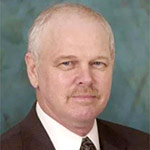In Part One, I chronicled how the United States government coerced “we the people’ into surrendering all of our gold coins and bullion. I then explained how the same government used the catastrophe or WWII to get possession of most of the gold belonging to our allies as well – with the promise they could have it back by for US dollars.
In 1971, the President of France sent a battleship sailing into the New York City harbor to pick up French gold. That was in response to President Nixon announcing the US dollar would no longer be backed by gold, raising serious doubts about the future value of those dollars. https://scholarship.law.columbia.edu/cgi/viewcontent.cgi?article=3545&context=faculty_scholarship
As I wrote in a previous column (the link is in Part 1), after Nixon took the US off ’the gold standard’, “The US dollar became ‘fiat’ currency — backed only by our government’s promise of its value. It meant our government could print as much money as it wanted because the money wasn’t based on anything of intrinsic value.” This laid the groundwork for what became ‘Modern Monetary Theory’ — which wasn’t really modern. It was just a bad idea resurrected, that has now resulted in a $32 trillion national debt — and rising — to the great distress of Daily Post columnist Louis Cannon’s cat, Roscoe.
But back to “we the people” owning gold.
In 1974 (now that the US was off the ‘gold standard’) Congress passed Public Law 93-374 that (among other things) made it once again legal for private citizens to own gold coins and bullion. Section 2(b) of that Act provides: “No provision of any law in effect on the date of enactment of this Act, and no rule, regulation, or order in effect on the date subsections (a) and (b) become effective may be construed to prohibit any person from purchasing, holding, selling, or otherwise dealing with gold in the United States or abroad.”
There was another lesser known part of the 1934 Gold Reserve Act that prohibited so-called ‘gold clauses’ in contracts. A gold clause requires that financial settlement of the contract must be in gold. Prior to the Reserve Act, it was apparently not uncommon in real estate contracts to require payment in ‘gold coin of the United States’.
In 1977, Congress amended the law to make it clear that parties could include gold clauses in contracts formed after 1977 – except contracts which obligate the government to pay. (For any lawyers who may be reading this, see 216 Jamaica Ave, LLC v S&R Playhouse, 540 F3d 433, 435 – 6CCA, 2008.)
Apparently the land sale solicitors who keep pestering us to sell our Aspen Springs property have not thought to dangle gold as an inducement.
The one thing you still can’t do, though, is present U.S. paper currency to the government in exchange for gold — as you could before 1933. But you can swap your gold for U.S. dollars – at a “dollar for dollar” rate of exchange.
That means if you give the government a U.S. minted 1oz gold ‘Liberty’ coin with a face value of $50, you will receive $50 in paper currency – despite the fact the value of 1oz of gold on the international ‘spot market’ is (as of the day this is being written) $1,914. (‘Spot’ price reflects not just the monetary value of gold, but also its value as a commodity for commercial use, ie: jewelry and electronics).
That’s even more of an increase in value (for the government) than when they coerced US citizens to surrender their gold in 1933.
The government gets a valuable commodity worth (according my rusty high school math) 3,728% more than they pay for it — and in return you get paper currency which (due to inflation they caused by profligate spending) is becoming progressively worth less.
A hell of a deal… for the government!
“Gold is a devilish sort of thing…”

